#Cross-platform development
Explore tagged Tumblr posts
Link
Is Cross-Platform Development the Future of Mobile Apps
Cross-platform development offers numerous advantages in terms of reduced development time, wider market reach, and simplified maintenance. While there may be some potential challenges, such as performance limitations and learning curve, the advancements in cross-platform frameworks are making this approach increasingly viable for a wider range of mobile app projects. As the demand for mobile apps continues to grow, cross-platform development is likely to play an increasingly prominent role in shaping the future of mobile app development.
4 notes
·
View notes
Text
#crossplatform#crossplatform development#crossplatform app development#cross-platform development#mobile development#app development
1 note
·
View note
Text
Explore the complete process of building a successful on-demand app, from key features and tech stack to monetization strategies. This guide by Glasier Inc. helps businesses turn app ideas into scalable, user-friendly digital solutions.
#custom software development services#mobile application development#AI development company#Cross-platform development#cloud-based development
0 notes
Text
Unlocking Success With Android App & Game Development Company

In today’s mobile-first world, having a powerful Android presence is crucial for business success. Whether you’re looking to build a business app, a mobile game, or an enterprise-grade solution, choosing the right development partner is key.
That’s where XcelTec, a leading Android app development company, comes in—delivering smart, scalable, and innovative Android application development and Android game development solutions tailored to your business needs.
Why Android Is the Right Platform
With over 3 billion active devices, Android is the most widely used mobile operating system globally. Here’s why businesses are investing heavily in Android app development:
Global Market Reach
Customizable & Open-Source
Cost-Effective Development
Faster Deployment
Google Play Store Accessibility
The open-source nature of Android allows greater flexibility and innovation — something XcelTec leverages fully for each client project.
Experts in Android Application Development
XcelTec offers full-cycle Android application development, from concept to deployment and maintenance. Our developers are skilled in building apps for:
Startups & Entrepreneurs
Enterprises & Government Projects
E-Commerce & Retail
Healthcare & EdTech
On-demand & Service Platforms
Our Core Android Development Services:
Custom App Development: Tailored Android apps with native Android app development performance
UI/UX design: User-centric interfaces with intuitive navigation
Testing & QA: Device compatibility, performance, and security testing
Cloud integration: Seamless backend infrastructure for scale
Maintenance & Support: Post-launch updates and optimizations
Expertise in Android Game Development
The mobile game development industry is booming — and Android game development leads the charge. XcelTec offers end-to-end game development services, using top engines like Unity and Unreal.
Game Development Highlights:
2D & 3D Game Design
Multiplayer & AR/VR Integration
In-app Purchases & Game monetization
Gamification & User Engagement
Analytics & Performance Tracking
Whether you’re building casual games, educational apps, or immersive experiences, XcelTec ensures your game performs seamlessly across Android devices.
Technologies We Use
XcelTec utilizes the latest tools and frameworks in Android development:
Languages: Kotlin, Java
Frameworks: Jetpack, Flutter (for cross-platform development)
Game Engines: Unity, Unreal Engine
Databases: Firebase integration, SQLite, Realm
Cloud: AWS, Google Cloud, Azure
CI/CD: GitHub Actions, Jenkins
Why Choose XcelTec?
Experienced Android Developers: Skilled in the latest technologies and frameworks.
Agile Development Process: Iterative, fast-paced, and collaborative.
Transparent Communication: Real-time updates, project tracking, and support.
Security & Scalability: Focused on secure, future-proof app architecture.
Client-Centric Approach: Your goals, timelines, and satisfaction come first.
Industries We Serve
E-Commerce & Retail
Healthcare & Telemedicine
Education & eLearning
Finance & Banking
Media & Entertainment
Logistics & Transportation
Conclusion
Choosing the right Android app development company can make or break your digital strategy. At XcelTec, we combine innovation, performance, and industry experience to deliver standout apps and games.
Whether you’re building your first app or scaling an existing platform, XcelTec is your go-to partner for Android application development and Android game development. Contact us on: +91 987 979 9459 | +1-(980) 428-9909 Email us at: [email protected] For more information, visit: https://www.xceltec.com/
#Android app development company#Android application development#Android game development#UI/UX design#Mobile game development#Native Android app development#Game monetization#Cross-platform development#Firebase integration#Cloud integration
0 notes
Text
#Pune has quickly grown into one of India’s major IT hubs#boasting a talented pool of developers#competitive pricing#UX/UI design#cross-platform development#innovation
0 notes
Text
Cross-Platform Development: The Ultimate 2025 Guide to Building Apps That Work Everywhere
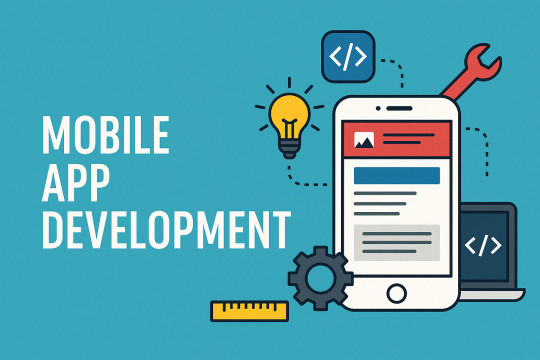
Introduction: Why Cross-Platform Development Matters More Than Ever
In the fast-paced digital world, businesses want apps that are fast to build, cost-effective, and work across Android, iOS, Windows, and the web. Enter cross-platform development—the solution that allows you to write code once and deploy everywhere.
If you’re a startup, business owner, or a developer exploring smarter ways to build applications in 2025, cross-platform development is a game-changer.
In this guide from diglip7.com, we’ll explore what cross-platform development is, its benefits and drawbacks, best tools and frameworks, real-life use cases, and how you can get started today.
What is Cross-Platform Development?
Cross-platform development is the process of creating software applications that are compatible with multiple operating systems using a single codebase.
Instead of building separate apps for Android, iOS, and web from scratch, developers can write the core logic once and reuse it across platforms.
🔍 Example:
Instagram, Facebook, and Skype are excellent examples of cross-platform apps—they work seamlessly across various devices and platforms using shared codebases.
Why Businesses Are Choosing Cross-Platform Development in 2025
The popularity of cross-platform development is skyrocketing for good reasons:
✅ Faster Time to Market
A single codebase means quicker development and deployment. You can launch on both iOS and Android simultaneously, saving time and energy.
✅ Reduced Development Costs
Why hire separate iOS and Android teams when you can build both using one tech stack? Cross-platform development cuts costs without compromising on performance.
✅ Consistent User Experience
Using the same design and logic ensures your brand looks and behaves consistently across platforms.
✅ Easier Maintenance and Updates
Updates or bug fixes are made once and pushed to all platforms, improving efficiency and consistency.
✅ Wider Audience Reach
With apps that run on multiple devices, your brand reaches a broader audience without additional development effort.
Popular Cross-Platform Frameworks in 2025
Here are the most widely used cross-platform frameworks in 2025, and why developers love them:
1. Flutter (by Google)
Language: Dart
Strengths: High performance, hot reload, beautiful UI, strong community
Use Cases: eCommerce apps, social networks, MVPs
2. React Native (by Meta)
Language: JavaScript
Strengths: Native-like performance, strong community, reusable components
Use Cases: Messaging apps, utility apps, startups
3. Xamarin (by Microsoft)
Language: C#
Strengths: Integrates with .NET ecosystem, strong enterprise support
Use Cases: Enterprise apps, internal business tools
4. Unity
Language: C#
Strengths: Best for gaming and 3D apps
Use Cases: Cross-platform games, AR/VR apps
5. Ionic + Capacitor
Language: JavaScript/TypeScript
Strengths: Web-first, fast prototyping, integration with Angular/React/Vue
Use Cases: Hybrid apps, quick prototypes, educational apps
Native vs. Cross-Platform: What's the Difference?
FeatureNative DevelopmentCross-Platform DevelopmentCodebaseSeparate for each platformSingle shared codebasePerformanceSlightly betterVery close with modern frameworksTime & CostHigherLowerUser ExperiencePlatform-specific UINear-native look and feelMaintenanceUpdate each platform separatelyOne update for all platformsIdeal ForComplex, hardware-intensive appsBusiness apps, MVPs, startups
Cross-Platform Development Process: Step-by-Step
Here’s how a typical cross-platform development cycle works:
Step 1: Define the App Requirements
Understand target audience and platforms
List core features and design expectations
Step 2: Choose the Right Framework
Based on budget, timeline, and performance needs
Flutter or React Native are top choices for most use cases
Step 3: Design the App UI/UX
Use Figma, Adobe XD, or Sketch
Ensure responsive design and consistent brand identity
Step 4: Develop the App
Write code using the chosen framework
Integrate APIs, third-party tools, and local databases
Step 5: Test on All Platforms
Use tools like Appium, BrowserStack, or in-built emulators
Perform unit, integration, and UI testing
Step 6: Deploy to App Stores
Prepare builds for Android and iOS
Follow Play Store and App Store guidelines
Step 7: Monitor and Maintain
Track app performance with tools like Firebase, Sentry, or Analytics
Push updates regularly to fix bugs and improve features
Pros and Cons of Cross-Platform Development
Pros:
✅ Single codebase = faster development
✅ Reduced development and maintenance costs
✅ Consistent UI and UX across devices
✅ Larger potential user base
✅ Great for MVPs and quick market entry
Cons:
❌ Slightly lower performance for very complex apps
❌ Dependency on third-party plugins
❌ Limited access to some native features
❌ UI might not always feel “perfectly native”
Cross-Platform Development Trends in 2025
Stay ahead with these rising trends:
🔮 AI Integration
AI-powered features like chatbots, image recognition, and voice commands are now easily embedded across platforms using unified SDKs.
🔮 Cloud Backends
Integration with services like Firebase, Supabase, and AWS Amplify makes building scalable apps easier than ever.
🔮 Progressive Web Apps (PWAs)
PWAs continue to rise as a fast, app-like alternative to native apps.
🔮 Low-Code/No-Code Platforms
Platforms like OutSystems and FlutterFlow let non-developers build cross-platform apps visually.
Reviews from Developers and Businesses
👨💻 Developer Review
“Flutter has changed how I build apps. I can launch for both iOS and Android in weeks instead of months. Cross-platform saves time without sacrificing quality.” — Aman Gupta, Freelance App Developer
👩💼 Business Owner Review
“React Native allowed our startup to test our MVP quickly and affordably. We reached both Android and iPhone users without hiring two separate teams.” — Neha Sharma, Co-founder at a SaaS startup
Best Use Cases for Cross-Platform Development
Startups building MVPs
Businesses targeting both Android and iOS users
eCommerce and retail apps
Media, entertainment, and education apps
Apps with common UI across platforms
Common Mistakes to Avoid
❌ Ignoring platform-specific UI guidelines
❌ Choosing the wrong framework for your needs
❌ Skipping testing on real devices
❌ Overusing third-party libraries without vetting
❌ Not planning for long-term maintenance
How to Hire a Cross-Platform Development Team
Look for:
✅ Experience with React Native, Flutter, or your chosen framework
✅ Knowledge of both Android and iOS ecosystems
✅ Strong UI/UX design background
✅ Previous work on similar apps
Where to Find Developers:
Freelance platforms like Upwork, Toptal, Fiverr
Dedicated agencies
Tech communities like GitHub, Stack Overflow
FAQs About Cross-Platform Development
❓ Is cross-platform better than native?
It depends. For apps with general functionality and wide reach, cross-platform is better. For hardware-intensive apps (games, AR), native may be better.
❓ Which is the best cross-platform framework in 2025?
Flutter and React Native are leading in 2025 due to their large communities, excellent performance, and robust libraries.
❓ Can I convert a website into a mobile app using cross-platform tools?
Yes! Tools like Ionic and React Native Web allow you to reuse web components for mobile.
❓ How much does cross-platform development cost?
Depending on complexity, costs can range from $5,000 to $100,000+. It's usually 30-40% cheaper than building two native apps.
❓ Is it suitable for large enterprise apps?
Absolutely. With frameworks like Xamarin and Flutter, many large corporations have already adopted cross-platform for internal and consumer apps.
Conclusion: The Future is Cross-Platform
Cross-platform development is not just a trend—it's a powerful strategy for building efficient, scalable, and user-friendly apps in 2025.
By reducing costs, speeding up time to market, and maintaining consistency, it's ideal for businesses, startups, and developers alike.
Whether you’re planning your next big app or scaling an existing one, cross-platform technology offers the flexibility and reach you need.
Ready to build your next cross-platform app? Explore the latest frameworks, tutorials, and industry tips at diglip7.com—your trusted source for digital innovation.
0 notes
Text
#Hybrid Mobile Apps#Cross-Platform Development#Mobile App Development#Hybrid App Frameworks#Responsive Mobile Design#Ionic Framework#Cordova#React Native#Mobile User Experience#App Performance Optimization
0 notes
Text
#Cross-Platform Development#Cross-Platform Mobile App Development#app development for startups#mobile application development
0 notes
Text
Why Businesses Trust .NET for High-Performance Apps
Introduction .NET has remained a developer favourite for over two decades, and it’s no surprise why. With its backwards solid compatibility, developers can continue using the same code and libraries, scaling and evolving applications smoothly without extensive rewrites. But did you know that it’s not just developers who appreciate .NET? Businesses do, too—over 25% of enterprises rely on the…
#.NET enterprise solutions#cross-platform development#custom .NET services#scalable frameworks#secure web development
0 notes
Text
App Development Reshaped: The Cross-Platform Streaming Revolution

The mobile app landscape is undergoing a dynamic shift, driven by the ever-growing demand for streaming experiences. From entertainment and education to productivity and communication, users are embracing apps that deliver real-time content and seamless accessibility. As a result, mobile app development in Arizona is adapting to this streaming revolution, with cross-platform development taking center stage.
The Rise of Cross-Platform Streaming Apps:
Traditionally, developers faced a major hurdle: building separate apps for iOS and Android, doubling the time and resources required. This is where cross-platform development steps in, allowing developers to create a single codebase that works seamlessly across multiple platforms. This approach offers several advantages for streaming apps:
Faster development and deployment: Developers can reach a wider audience quickly and efficiently, without duplicating efforts for each platform.
Reduced costs: The single codebase reduces development and maintenance expenses, making it a cost-effective solution.
Consistent user experience: Users enjoy a familiar and unified experience across devices, regardless of their operating system.
Simplified updates: Updates are rolled out simultaneously across all platforms, ensuring everyone has the latest features and bug fixes.
Unleashing the Streaming Potential:
The benefits of cross-platform development are particularly impactful for streaming apps. Here’s how:
Real-time content delivery: Cross-platform frameworks enable smooth and efficient data streaming, ideal for live video, audio, and other real-time content.
Offline functionality: Users can access and enjoy content even without an internet connection, thanks to offline caching capabilities.
High-performance: Modern frameworks ensure exceptional performance and minimize buffering, creating a lag-free streaming experience.
Integration with native features: Developers can leverage device-specific features like cameras and microphones, enriching the streaming experience.
Arizona at the Forefront:
Top cross-platform mobile app development in Arizona is thriving, with innovative companies embracing this powerful technology. This translates to several advantages for local businesses looking to build streaming apps:
Access to experienced developers: Arizona boasts a talented pool of developers skilled in cross-platform development frameworks like React Native, Flutter, and Xamarin.
Cost-competitive solutions: Local agencies can offer competitive rates compared to national agencies, while delivering high-quality work.
Collaboration and innovation: Arizona’s vibrant tech scene fosters collaboration and knowledge sharing, leading to cutting-edge solutions tailored to specific needs.
Future-Proofing Your Streaming App:
By choosing best mobile app development services in Arizona with expertise in cross-platform development, you can create a future-proof streaming app that:
Adapts to evolving technologies: The single codebase allows for easy integration of new features and technologies as they emerge.
Scales with your business: Cross-platform apps can seamlessly accommodate user growth and expand into new markets without major redevelopment.
Reduces long-term costs: The efficient development process and simplified maintenance ensure cost-effectiveness throughout the app’s lifecycle.
Embrace the Streaming Revolution:
Don’t let platform limitations hinder your streaming app’s potential. Leverage the power of cross-platform mobile app development in Arizona to deliver an exceptional user experience, reach a wider audience, and stay ahead of the curve. Partner with a top cross-platform mobile app development company in Arizona and unlock the true potential of your streaming vision.
Content Source App Development Reshaped: The Cross-Platform Streaming Revolution
#app development#mobile app development company#mobile app development#mobile app development in Arizona#cross-platform development#best mobile app development services in Arizona
2 notes
·
View notes
Text
Building Cross Platforms app with .NET MAUI
.NET MAUI (Multi-platform App UI) is Microsoft's solution for simplifying cross-platform app development by allowing developers to create mobile (iOS, Android) and desktop (Windows, macOS) apps using a single codebase in C# and XAML.
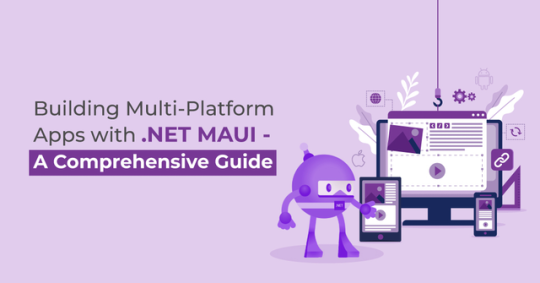
It’s a major step up from Xamarin, streamlining the development process for apps that run on multiple platforms without the need to manage separate versions for each.
Here’s a breakdown of why .NET MAUI is a game-changer
1)Single Codebase: Write code once, and it runs on multiple platforms, reducing development time and complexity.
2) Native Performance: Apps run natively on each platform, ensuring high performance and a seamless user experience that feels platform-specific.
3) Consistent User Experience: It adapts the UI to match the native design principles of each platform (iOS, Android, Windows, macOS).
4) Shared Code: Core business logic and backend interactions can be shared across all platforms, minimizing redundant code and improving consistency.
5) Cross-Platform APIs: Access device features (like GPS and cameras) through shared APIs without needing platform-specific code.
6) Platform-Specific Flexibility: While most of the code is shared, .NET MAUI allows for custom platform-specific functionality when needed.
7) Unified Project Structure: Manage all platform-specific configurations and resources in a single project structure, streamlining maintenance and updates.
8) Full Integration with the .NET Ecosystem: It leverages familiar tools like Visual Studio and supports features like hot reload and cross-platform debugging, making development faster and easier.
Key Features:
1)Blazor Integration: While .NET MAUI doesn’t support web apps natively, it can work with Blazor to build web applications. Using Blazor Hybrid, developers can combine web and native development by embedding Blazor components within MAUI apps.
2) Multi-Targeting: Developers can build and deploy apps for multiple platforms from a single project.
Conclusion:
.NET MAUI essentially makes cross-platform development more efficient by cutting down the need for managing separate codebases, while also offering the flexibility to cater to platform-specific needs.
Although it doesn’t cover web development by itself, Blazor can be used alongside MAUI to cover the web component, extending its cross-platform reach further.
It’s a significant step forward in creating mobile, desktop, and potentially web apps all in one ecosystem.
0 notes
Text
Top 10 Apps Built With React Native Framework
Explore the impact of React Native Framework on mobile app development, featuring top apps like Facebook, and learn how its cross-platform capabilities boost performance.
#React Native App development#React Native Framework#cross-platform development#developer of React Native
1 note
·
View note
Text
Simplify Development: Accelerate App Building With a Unified Codebase
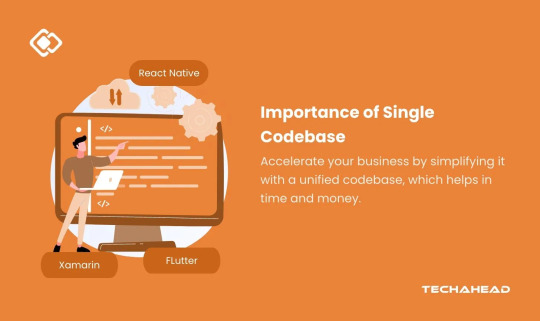
Let’s talk about the new reality in app development: unified codebases. This approach isn’t just a trend; it’s a strategic shift that accelerates app building across multiple platforms using a single, cohesive codebase. By focusing on this method, developers are seeing not only faster deployment times but also enhanced consistency and lower maintenance costs.
This streamlined process is reshaping how we think about developing applications, offering a direct route to more efficient and scalable solutions.
In this article, we will take a deep dive into the benefits and methodologies of unified codebases. We will study this up-and-coming trend thoroughly and explore its significance in the tech world.
How Unified Codebase Can Accelerate Time-to-Market?
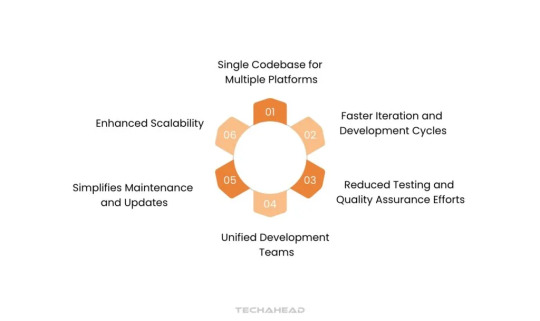
Unified codebase is another form of saying of cross-platform app development. It offers clear advantages which drive faster time-to-market and allow businesses to launch applications more efficiently.
Single Codebase for Multiple Platforms
A significant advantage of the single codebase approach is the ability to create one codebase for multiple platforms. Native apps require separate development for each operating system, extending the project timeline.
However, with cross-platform frameworks, app developers can write code once and deploy it across various platforms, such as iOS, Android, and the web. This approach simplifies development by cutting down duplication, enabling businesses to launch their apps simultaneously across platforms, and shortening the overall development cycle.
Faster Iteration and Development Cycles
A single codebase also accelerates iteration and feature updates. Since developers work with a unified codebase, changes only need to be made once, and they are applied across all platforms. This reduces the time spent on bug fixes and quality assurance.
Additionally, cross-platform frameworks come with pre-built libraries and components, eliminating the need to build features from scratch. These resources simplify development by offering ready-to-use elements like UI components, animations, and system functions, further speeding up the process.
Reduced Testing and Quality Assurance Efforts
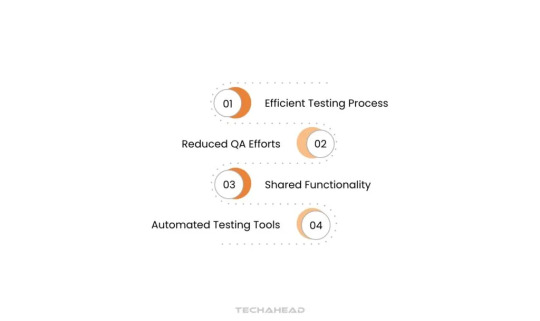
With a single codebase, the testing process becomes more efficient, as repetitive testing for each platform is no longer required. In native app development, QA teams must test each platform individually, consuming time and resources. Cross-platform development allows for shared functionality, which implies development by streamlining testing efforts. Automated testing tools can be used to ensure consistent performance across all platforms, further reducing the time spent on OA.
You can also learn about the exact difference between Flutter and native app development.
Unified Development Teams
Single codebase development eliminates the need for separate iOS and Android teams, simplifying coordination. Native development often requires independent teams, which can lead to coordination challenges and extended timelines. With a single team handling both iOS and Android, project management becomes more cohesive. This simplifies development by reducing communication barriers and ensuring faster, more synchronized development cycles.
Simplifies Maintenance and Updates
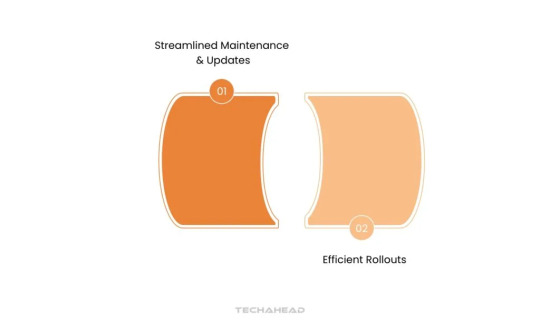
Single codebase development significantly streamlines maintenance and updates. With a unified codebase to manage, bugs, and features updates are resolved faster, reducing downtime between releases. This allows businesses to roll out updates and improvements more efficiently compared to maintaining separate native apps, further helping to simplify development and keep users satisfied with timely enhancements.
Enhanced Scalability
Cross-platform apps provide superior scalability, allowing businesses to target multiple platforms from the outset. Native app development typically requires staggered release, launching on one platform and expanding to others later. A single codebase eliminates this delay, enabling simultaneous deployment across all platforms. This approach not only simplifies development but also wins the initial user base, boosting the app’s success potential by reaching more users faster.
By leveraging a unified codebase, businesses can streamline processes, cut down timelines, and ensure faster time-to-market, all while maintaining high-quality output.
Popular Single Codebase Frameworks
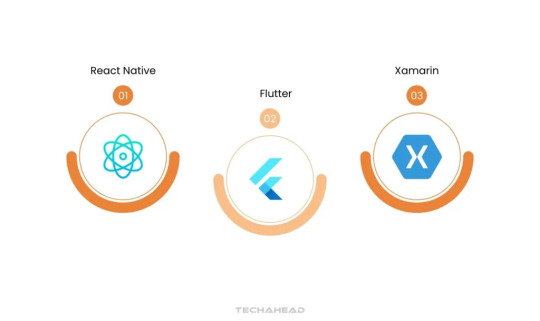
Several single codebase frameworks simplify app creation by offering a unified codebase solution for multiple platforms. Each framework comes with distinct benefits and challenges. Below are some top frameworks, along with their properties, advantages, and potential limitations.
React Native
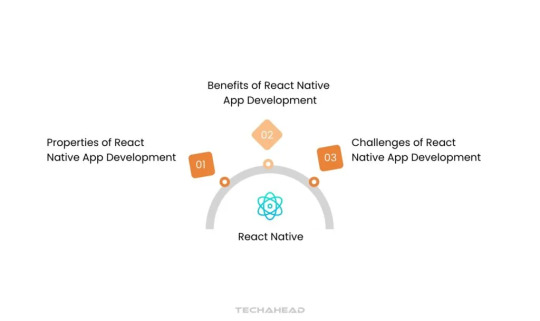
React Native app development, developed by Facebook, has become a top choice for building mobile apps using JavaScript while delivering a native-like experience.
Properties of React Native App Development:
Programming Language: JavaScript
Supporting Platforms: iOS and Android
Ideal Use Case: Apps requiring rapid deployment with reusable components across multiple platforms.
Benefits of React Native App Development:
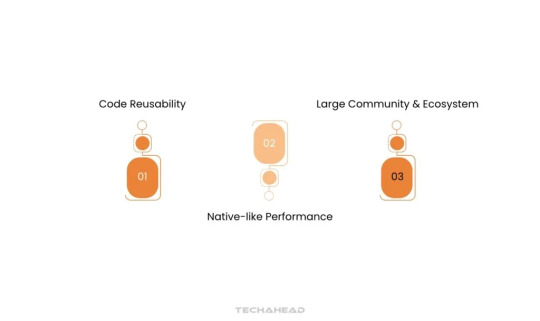
Code Reusability: The ability to write once and run on both iOS and Android significantly reduces development time.
Native-like Performance: React Native bridges the gap between cross-platform convenience and native performance.
Large Community and Ecosystem: React Native boasts extensive community support, making it easier for developers to troubleshoot issues.
Challenges of React Native App Development:
Complex UI Development: While effective for most apps, creating highly complex UIs may require extra native modules.
Performance Lag: In some cases, apps might face performance issues when compared to fully native apps, especially in areas demanding heavy computation.
React Native’s single codebase advantages simplify development while maintaining the feel of a native app, making it an efficient option for businesses aiming for faster launches.
Flutter
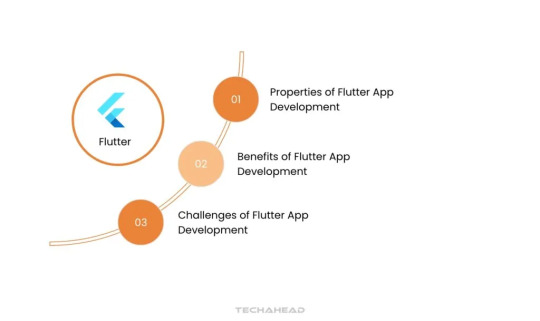
Flutter app development, developed by Google, is a highly versatile UI toolkit used for building natively compiled applications from a single codebase.
Properties of Flutter App Development:
Programming Language: Dart
Supported Platforms: iOS, Android, Web, Desktop
Ideal Use Cases: Apps that require high customizability and advanced UI/UX features, including graphics-rich applications.
Benefits of Flutter App Development:

Hot Reloading: FLutter’s hot reload features accelerate development cycles by enabling real-time updates to the UI without restarting the app.
Rich Set of Widgets: Flutter provides a vast library of customizable widgets, allowing developers to craft highly visually appealing apps.
Express UI Design: Flutter’s customizable widgets support complex UI designs that can deliver smooth animations and transitions.
Challenges of Flutter App Development
Learning Curve: As Dart is the primary programming language for Flutter, developers unfamiliar with it may take time to adapt.
App Size: FLutter apps tend to be larger than those built with other frameworks, which could affect download times or app storage requirements.
Flutter’s single codebase features allow for the creation of highly aesthetic apps, while its performance efficiency caters to a wide range of platforms simultaneously.
Xamarin
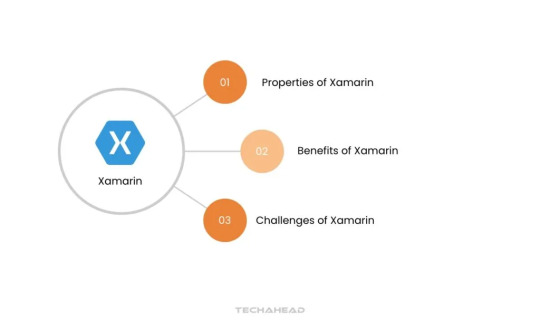
Xamarin, powered by Microsoft, allows developers to build cross-platform apps using C# and .NET frameworks while accessing native APIs.
Properties of Xamarin
Programming Language: C# and .NET
Supported Platforms: iOS, Android, Windows
Ideal Use Case: Enterprise-level applications and companies already integrated with Microsoft technologies.
Benefits of Xamarin
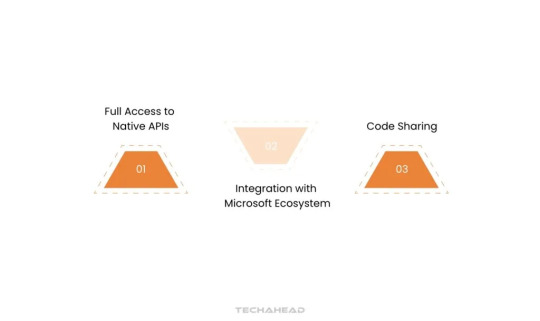
Full Access to Native APIs: Xamarin ensures near-native performance by giving developers direct access to platform-specific APIs.
Integration with Microsoft Ecosystem: Xamarin’s seamless integration with tools like Visual Studio makes it an excellent choice for enterprises using Microsoft’s suite.
Code Sharing: It allows up to 90% of code to be shared between platforms, enhancing development speed and efficiency.
Challenges of Xamarin
App Size and Performance: Xamarin apps can sometimes have larger footprints, potentially leading to increased app size or slight performance lags.
UI Customization: Developers may need to write custom code for platform-specific UI, which can slow down the process compared to fully native frameworks.
With Xamarin, the single codebase concept supports faster development cycles, especially for enterprises seeking near-native performance without compromising on platform reach.
Why Should You Go For A Single Codebase Process?
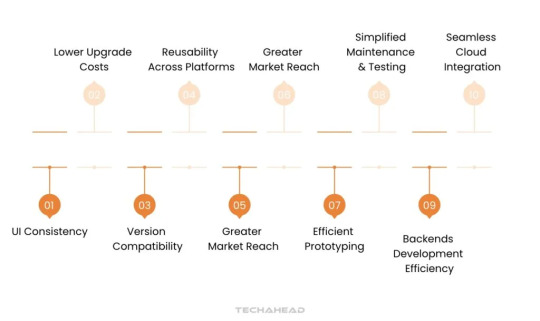
UI Consistency
Using a single codebase allows apps to target multiple platforms, whether Android, iOS, or Windows. This not only reduces development costs but also increases the app’s market penetration by providing users with faster access to your services.
Lower Upgrade Costs
Prototyping is essential in app development to validate ideas and concepts. A single codebase streamlines this process, making it faster and more efficient to create prototypes, helping developers stay on the right track during the development phase.
Version Compatibility
Native apps often require more resources, including time and money, to manage compatibility across different versions. By using a single codebase, you minimize these challenges and can deploy apps with minimal customization across platforms.
Reusability Across Platforms
Once a single codebase is developed, it can be reused for future projects and across various platforms. This reusability factor helps developers reduce redundant work and accelerate new application development.
Greater Market Reach
Using a single codebase allows apps to target multiple platforms, whether Android, iOS, or Windows. This not only reduces development costs but also increases the app’s market penetration by providing users with faster access to your services.
Efficient Prototyping
Prototyping is essential in app development to validate ideas and concepts. A single codebase streamlines this process, making it faster and more efficient to create prototypes, helping developers stay on the right track during the development phase.
Simplified Maintenance and Testing
Without a single codebase, managing separate updates for each platform can be cumbersome. A unified code simplifies both maintenance and testing, allowing teams to focus on delivering a higher-quality product with fewer headaches.
Backends Development Efficiency
Backend development becomes smoother with a single codebase. Cross-platform development frameworks, like Java or Kotlin, enable faster backend handling, ensuring the app runs smoothly while reducing the complexity of managing multiple code sources.
Seamless Cloud Integration
A single codebase makes integrating cloud functionalities more seamless. This boosts the app’s capabilities, as cloud integration allows developers to offer enhanced features and deliver an exceptional user experience with minimal effort.
By leveraging a single codebase, you streamline every step of the development process, reduce costs, and ultimately provide a better experience for both developers and users.
Conclusion
It’s time to move beyond the hassle of managing separate codebases for mobile and web apps. Embrace the future with single codebase development, enabling you to create high-performance apps using a unified code foundation. Think of the time saved and the cost-efficiency gained.
At TechAhead, we specialize in this game-changing approach. We help you achieve the agile development that is required in today’s digital landscape. To deliver quicker launches, lower expenses, and provide a seamless user experience across all platforms.
Source URL: https://www.techaheadcorp.com/blog/simplify-development-accelerate-app-building-with-a-unified-codebase/
0 notes
Text
Why Cross-Platform Development is Essential for Health and Fitness App Success?
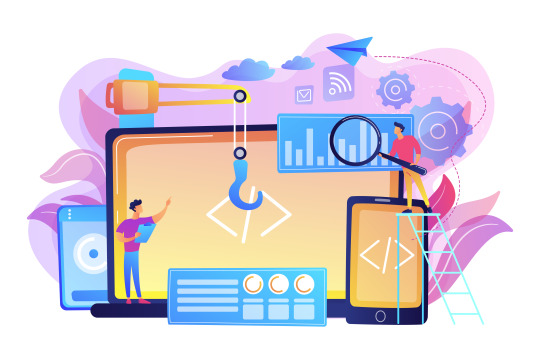
The health and fitness industry has seen an explosive growth in recent years, with more people than ever turning to mobile apps to track their workouts, monitor their diets, and maintain a healthier lifestyle. The convenience and accessibility of these apps have made them an essential tool for fitness enthusiasts and those looking to improve their overall well-being. With millions of users across various platforms—iOS, Android, and web—developers are increasingly focusing on creating apps that can seamlessly run on multiple devices.
Cross-platform development has emerged as a game-changer in this space, enabling developers to create an app that works on multiple operating systems without sacrificing functionality or user experience This approach not only reduces development time and costs not only on but is perfect for the users It ensures the experience, no matter what device they are using. Whether you're a developer, fitness entrepreneur, or just someone interested in the tech behind your favorite fitness apps, this blog will provide valuable insight into how cross-platform developments are shaping health and fitness in the future of technology.
Definition and Key Concepts of Cross-Platform Development
Cross-platform development refers to the process of creating software applications that are compatible with multiple operating systems such as iOS, Android, and web browsers, using a single code base Instead of creating an application separately for each platform, developers use platform tools and provide a framework that allows them to write code once and port it across platforms This approach streamlines the development process, ensuring a consistent user experience across devices.
Why Cross-Platform Development is Ideal for Health and Fitness Apps?
In today's fast-paced world, the advancement of technology has seamlessly woven health and fitness apps into the fabric of countless individuals' everyday lives. These innovative applications play a vital role in enabling users to monitor their exercise routines, keep tabs on their nutritional intake, establish fitness objectives, and participate in simulated workout sessions. With the wide array of gadgets at people's disposal such as smartphones, tablets, wearables, and desktop computers, developers in the health and fitness sector now find cross-platform development to be a fundamental strategy for creating these apps.
1. Reach a Wider Audience Across Multiple Devices and Platforms: One of the most significant advantages of cross-platform development is the ability to reach a broader audience. Health and fitness apps are used by people on various devices—whether it’s an iPhone, an Android smartphone, a tablet, or even a smartwatch. By developing a cross-platform app, you ensure that your product is accessible to users regardless of their preferred device or operating system. This inclusivity not only broadens your app's reach but also enhances its potential for growth and user acquisition.
Moreover, health and fitness enthusiasts often switch between devices throughout the day. They might track their morning runs on a smartwatch, log their meals on a smartphone, and review their fitness progress on a tablet in the evening. Cross-platform apps ensure a seamless transition between these devices, providing users with a consistent experience.
2. Consistent User Experience Regardless of the Device Used: User experience is paramount in the health and fitness app space. Users expect their apps to work flawlessly, whether they're using an Android phone or an iPad. Cross-platform development allows for a consistent user interface and experience across all platforms. This uniformity ensures that users don’t need to relearn how to navigate the app when switching devices, making the app more intuitive and user-friendly.
Consistency also plays a critical role in brand identity. A cross-platform approach ensures that your app's design, features, and functionality remain uniform across different devices, reinforcing your brand's image and reliability in the minds of users. This reliability is particularly important in the health and fitness industry, where users depend on accurate data and consistent performance to track their progress and achieve their goals.
3. Faster Development Time and Reduced Costs: In the competitive world of app development, speed and cost efficiency are crucial. Traditional native app development requires building separate apps for each platform, which can be time-consuming and expensive. Cross-platform development, on the other hand, enables developers to write code once and deploy it across multiple platforms, significantly reducing both development time and costs.
This approach is especially useful for startups and small businesses that may not have the resources to develop and maintain different apps for different platforms By choosing cross-platform development, these businesses can bring their apps to market faster, for their competitive edge is there.
Additionally, a single codebase allows developers to easily implement new features or make changes, ensuring that all users receive updates at the same time. This quick time to market is especially useful in the health and fitness industry, where trends and user expectations can change rapidly.
4. Easier Maintenance and Updates: Maintaining and updating an app can be a daunting task, especially when dealing with multiple versions for different platforms. With native app development, each platform requires separate updates and bug fixes, which can lead to inconsistencies and delays in delivering improvements to users.
Cross-platform development simplifies this technique by permitting developers to manage an unmarried codebase. This means that malicious program fixes, updates, and new features may be applied greater effectively, making sure that all users enjoy the identical wonderful. It also reduces the hazard of discrepancies among extraordinary platform versions, assisting in keeping the app’s integrity and reliability.
Moreover, easier maintenance translates to lower ongoing costs, freeing up resources that can be invested in other areas, such as marketing or expanding app features. This is particularly important for health and fitness apps, where timely updates are essential to keep up with new health guidelines, trends, and user feedback.
Popular Cross-Platform Frameworks
Flutter: Developed by Google, Flutter is an open-source UI toolkit that allows developers to create natively compiled applications for mobile, web, and desktop from a single codebase. It uses the Dart programming language and is known for its fast performance and expressive UI components.
React Native: Created by Facebook, React Native is one of the most popular cross-platform frameworks. It uses JavaScript and React, enabling developers to build apps with a native look and feel. React Native is known for its vast community support and extensive library of third-party plugins.
Xamarin: A Microsoft-owned framework, Xamarin allows developers to build cross-platform apps using C#. It offers deep integration with the underlying platform APIs, giving apps a truly native performance and appearance. Xamarin is particularly favored by developers who are already familiar with the Microsoft ecosystem.
In the ever-changing realm of health and fitness technology, one standout solution for app developers is cross-platform development. This innovative approach allows apps to work smoothly on various devices and platforms, expanding their reach to a wider audience while ensuring a consistent user experience. Developing with a single codebase not only saves time and money but also makes it easier to update and maintain the apps efficiently.
The demand for easy-to-use health and fitness apps is on the rise, making cross-platform development a strategic choice for success in a competitive market. Whether you're a new startup looking to establish your presence or an established brand aiming to boost your online visibility, this approach provides the adaptability and scalability required to meet the diverse needs of today's users. By employing the right tactics and resources, you can create an app that not just meets but surpasses the expectations of a global user base, fostering engagement and encouraging healthy lifestyles across all platforms.
0 notes
Text
The Future of Cross-Platform Development: Flutter vs. React Native in 2024
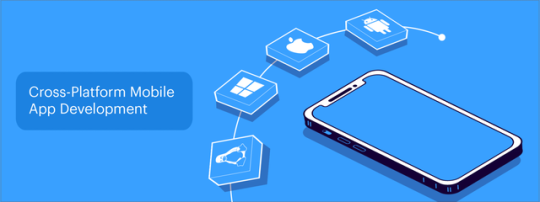
Hey there, fellow code wranglers and app aficionados! Pull up a chair, grab your favorite caffeinated beverage, and let's dive into one of the hottest debates in the mobile dev world: Flutter vs. React Native. It's 2024, and these two titans of cross-platform development are still duking it out for supremacy. But which one should you choose for your next project? Let's break it down, shall we?
The Cross-Platform Dream
First off, let's remind ourselves why we're even having this conversation. Remember the days of building separate apps for iOS and Android? Yeah, those were fun times (said no one ever). Cross-platform development promises the holy grail: write once, run anywhere. And both Flutter and React Native have been delivering on that promise, each in their own unique way.
Flutter: The Dart-Powered Dynamo
Let's start with Google's golden child, Flutter. Born in 2017, Flutter has grown up fast. By 2024, it's become a force to be reckoned with. Here's what's got developers buzzing:
1. Dart-astic Performance
Flutter's secret weapon? Dart. This language compiles to native code, giving Flutter apps that buttery-smooth 60 FPS performance we all crave. In 2024, Dart's just gotten better, with even more optimizations that make Flutter apps fly.
2. Widget Wonderland
Flutter's widget-based architecture is still a hit. Everything's a widget, which makes building UIs a breeze. And with the ever-expanding catalog of pre-built widgets, you can whip up a slick UI faster than you can say "hot reload."
3. Hot Reload on Steroids
Speaking of hot reload, Flutter's implementation is still lightning-fast in 2024. Make a change, see it instantly. It's like having a superpower for debugging and iterating.
4. Beyond Mobile
Flutter's not just for phones anymore. With Flutter for Web and Flutter Desktop in full swing, you can truly write once and run everywhere. Building a cohesive ecosystem across all platforms has never been easier.
5. Strong Community Vibes
The Flutter community has exploded. There's a package for everything, and the knowledge sharing is off the charts. Got a problem? Stack Overflow's got your back, pronto.
React Native: The JavaScript Juggernaut
Now, let's talk about Facebook's baby, React Native. It's been around since 2015, and it's aged like fine wine. Here's why it's still a top contender in 2024:
1. JavaScript Everywhere
React Native's use of JavaScript is still its biggest selling point. With JS being the lingua franca of web development, the learning curve for web devs is practically flat. Plus, the JavaScript ecosystem is vast and vibrant.
2. Native Feel, React Familiarity
React Native lets you build truly native apps using React. If you know React, you're already halfway there. And in 2024, the bridge between React Native and native components is smoother than ever.
3. Hot Reloading Delight
Like Flutter, React Native boasts hot reloading. Make a change, see it live. It's a developer's dream come true.
4. Web Integration Winner
Need to share code between your web and mobile apps? React Native's got you covered. The line between web and mobile development is blurrier than ever in 2024.
5. Battle-Tested and Enterprise-Ready
React Native has been around the block. It's proven itself in the trenches of app development, and big names are still betting on it. Stability and reliability are the name of the game here.
The Showdown: Flutter vs. React Native in 2024
Alright, now for the main event. How do these two stack up against each other in 2024? Let's break it down:
Performance
Flutter still has the edge here. Its compiled nature gives it a performance boost that's hard to beat. React Native has made strides, but if raw speed is your game, Flutter's your name.
Development Speed
It's a close call, but Flutter might have a slight advantage. Its hot reload is a tad faster, and the widget-based architecture can speed up UI development. However, if your team is already React-savvy, React Native might be quicker for you.
Learning Curve
React Native takes the cake here, especially if you're coming from a web background. JavaScript's ubiquity makes it easier to pick up. Dart, while not difficult, is less common and might take a bit more time to master.
UI Components
Flutter's built-in widget library is more comprehensive out of the box. React Native relies more on third-party libraries for advanced components. However, both have robust ecosystems in 2024, so you're not likely to be left wanting.
Community and Ecosystem
It's neck and neck. React Native has the advantage of age and the broader JavaScript community. Flutter, however, has seen exponential growth and has a dedicated, passionate following. You'll find plenty of support and resources for both in 2024.
Cross-Platform Capabilities
Flutter has made significant strides here. Its ability to target mobile, web, and desktop from a single codebase is impressive. React Native can do this too, but Flutter's implementation feels more cohesive.
Long-Term Viability
Both are here to stay. Google and Facebook are still heavily investing in their respective frameworks. Neither is going anywhere anytime soon.
So, Which One Should You Choose?
Ah, the million-dollar question. The truth is, there's no one-size-fits-all answer. It depends on your specific needs, your team's expertise, and your project requirements. Here's a quick guide:
Choose Flutter if:
- Performance is your top priority
- You're building a complex UI with custom designs
- You want to target multiple platforms (mobile, web, desktop) with a single codebase
- Your team is willing to learn Dart or already knows it
Go with React Native if:
- Your team is already proficient in JavaScript and React
- You need to share code between web and mobile apps
- You're building an app that needs to integrate closely with native components
- You prefer a more mature ecosystem with a longer track record
The Verdict
Here's the beautiful truth: you can't go wrong with either Flutter or React Native in 2024. They're both fantastic frameworks that can help you build amazing cross-platform apps. The "best" choice is the one that aligns with your team's skills, your project's needs, and your long-term goals.
My advice? Try them both. Build a small project in Flutter and another in React Native. See which one feels more natural, which one your team enjoys working with more. At the end of the day, the best framework is the one that helps you ship great apps efficiently and joyfully.
Remember, the tool is just that – a tool. What matters most is the craftsperson wielding it. So whichever you choose, focus on writing clean code, creating intuitive UIs, and delivering value to your users. That's what will set your app apart in 2024 and beyond.
0 notes